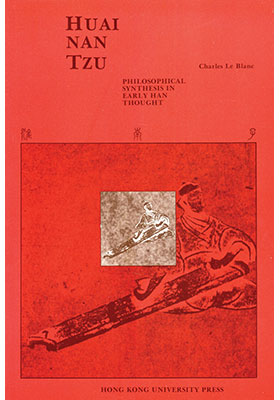Huai-nan Tzu
Philosophical Synthesis in Early Han Thought
(淮南子:漢初哲學思想)
ISBN : 978-962-209-179-5
December 1985
268 pages
Huai-nan Tzu (139BC) was viewed, for its great diversity of subject-matter, ideas and style, by traditional Chinese scholars as a composite work of the Eclectic School. It is the author’s contention, however, that one overriding concern pervades the work: the attempt to define the essential conditions for a Taoist political utopianism. The present study emphasizes Chapter Six of Huai-nan Tzu in expounding the theory of kan-ying STIMULUS-RESPONSE; RESONANCE, which postulates that all things in the universe are interrelated and influence each other according to pre-set patterns. Only in the True Man, who is ‘one with Tao’ and ‘attuned to the cosmos’, does kan-ying attain its ultimate realization, ‘the Great Peace’ and ‘the Great Merging’. ‘After all,’ concludes the author, ‘it is in Huai-nan Tzu that we find the statement.’
“The relation of the Sage to Tao is like the relation of the sunflower to the sun; although they cannot be together all the time, the fidelity of their tendency never wavers.”

